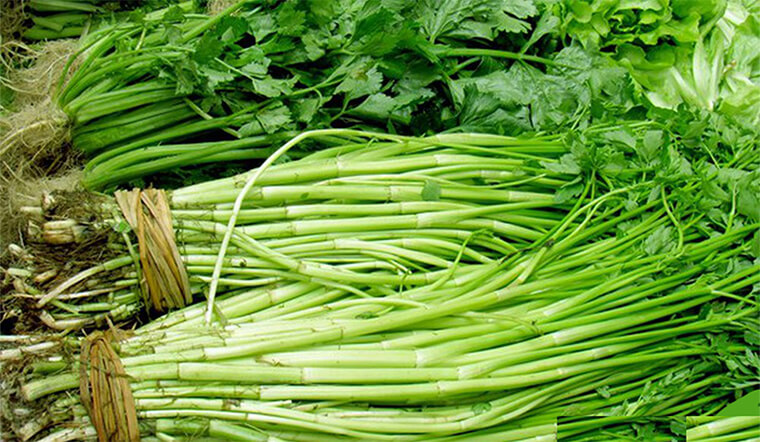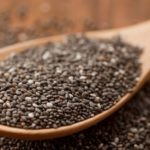Water celery, also known as swamp celery, is one of the most nutritious vegetables, especially during winter. Although it may not be as flavorful as other vegetables, its unique taste offers numerous health benefits, particularly for those suffering from high blood pressure and diabetes. There are two types of water celery: swamp celery and celery.
1. What is Swamp Celery?
(Oenanthe stolonifera (Roxb.) Wall), also known as water celery, rice celery, or tubular celery, belongs to the Apiaceae family. It is used not only to treat bloating and vomiting in children but also to address various conditions such as hematuria, dysuria, snake bites, and scorpion stings.
Characteristics
Swamp celery is a smooth herbaceous plant that grows to a height of 20-60 cm. Its stem is soft, white, light green, or blood-red, and is divided into several segments. The middle part of the stem is hollow inside, while the upper segments usually bear a single leaf.
The leaves of swamp celery are dark green, alternately arranged, and divided into several lobes. The margins have serrated edges, and the large leaf sheaths envelop the stem, growing long and submerged in mud, with roots developing at the nodes. The petiole is 3-8 cm long, and the leaves near the apex usually lack a petiole. New branches can grow from the leaf axils and develop into new plants.
The roots of swamp celery are tough and fibrous, firmly attached to the root system, and deeply embedded in the mud to absorb nutrients for the plant’s growth. Additionally, roots also grow sporadically at some nodes. The flowering season is typically from April to June, and the fruits are cylindrical in shape with four convex sides.
 What is Swamp Celery?
What is Swamp Celery?
Distribution
Swamp celery is native to East Asia and is commonly cultivated in countries such as Thailand, China, Taiwan, Japan, India, and Italy, where it is used as a food source and medicinal herb.
It thrives in cool climates (around 15-20 degrees Celsius), moist environments, and areas with abundant water and mud, such as rivers, lakes, ponds, and rice fields. Swamp celery is an asexually reproducing plant that propagates by sprouting from the leaf axils.
Parts Used
The entire plant, whether fresh or dried, is valued in traditional medicine for its medicinal properties.
Chemical Composition
Swamp celery contains 0.066% essential oil, 1.4% ash, 1.51% protein, iron, 0.28% fat, calcium, 2.47% carbohydrates, protein, sugar, phosphorus, carotenes, organic acids, and various vitamins, including A, B1, B2, P, and C.
2. Benefits of Swamp Celery
Swamp celery offers a plethora of health benefits, including:
- Hepatitis prevention: The active compounds in swamp celery help inhibit the replication of the hepatitis B virus. It is particularly beneficial for patients with acute liver damage, cirrhosis, and fatty liver.
- Clears heat and reduces inflammation
- Relieves bloating, abdominal distension, and nausea
- Treats fever and common cold symptoms
- When crushed, swamp celery can be used to treat abscesses, snake bites, and scorpion stings.
For more information: How to Prevent Abscesses?
3. Differences Between Swamp Celery and Celery
Characteristics and Distribution
Unlike swamp celery, celery (Apium graveolens) primarily grows on land. Its stem grows upright to a height of about 1 meter and has a longitudinal groove. The basal leaves have petioles and are divided into three lobes, forming a triangular shape. The middle and apical leaves lack petioles and are also divided into three lobes, sometimes with further divisions or none at all. The flowers are white or greenish-white and arranged in umbels.
While swamp celery originates from East Asia, celery is native to temperate regions. It thrives in cool and moist climates, tolerating cold but not heat. Therefore, after its introduction to Vietnam, celery only grows well during the winter-spring season.

Uses and Benefits
– Swamp Celery
Lowers blood pressure: Swamp celery is rich in fiber, contains no fat, and has low sugar content, making it ideal for individuals with high blood pressure. It can be consumed by cooking it into a porridge and eating it 2-3 times a week to help stabilize blood pressure.
Detoxifies the body: Swamp celery contains Albumin, a rare compound in other vegetables. It helps combat thirst, detoxifies the body, and is especially effective against heavy metal poisoning. Drinking swamp celery juice, including the roots, is recommended for optimal benefits.
Improves anemia: The high content of iron and phosphorus in swamp celery makes it beneficial for individuals with anemia. Stir-frying it with beef enhances its effectiveness.
Relieves cough and bronchitis: This condition is common during winter, especially in children and the elderly. For mild cases, swamp celery juice mixed with a little salt and steamed to heat the liquid can be consumed for relief.
Note: Individuals with itchy or scaly skin conditions should avoid excessive consumption of swamp celery as it contains Arachidon, a compound that promotes inflammatory reactions, hindering the healing process.

– Celery
Here are the benefits of celery:
Reduces high cholesterol: Celery contains a unique compound called 3-n-butylphthalide (BuPh) that helps lower blood lipid levels.
Prevents ulcers: This is a lesser-known benefit of celery. It can help prevent and reduce the formation of painful ulcers. According to a 2010 study, celery is believed to contain ethanol extracts, making it particularly useful in protecting the digestive tract from ulceration.
Aids in weight loss: Celery is very low in calories and is a valuable food for weight loss. It is not only rich in nutrients but also helps regulate lipid metabolism, effectively supporting weight loss.
Protects against cancer: Along with carrots, parsley, coriander, and turnips, celery contains polyacetylene compounds that prevent cell damage. It has been proven to reduce toxins and combat the causes of cancer, especially breast cancer, intestinal cancer, and leukemia.
4. How to Use Swamp Celery
 Beef Stir-fried with Swamp Celery and Swamp Celery Juice
Beef Stir-fried with Swamp Celery and Swamp Celery Juice
Cooking
Swamp celery can be prepared in various delicious and nutritious dishes, including stir-fries, soups, salads, and spring rolls.
Juicing
Swamp celery can be juiced, providing a refreshing and healthy drink. Swamp celery juice helps control high blood pressure, high cholesterol, insomnia, and improves sleep quality.
5. Precautions When Using Swamp Celery
We hope that through this article, you have gained a better understanding of swamp celery and celery, two common vegetables in Vietnam. Due to their different growing conditions, they possess distinct characteristics and uses. To utilize them effectively for medicinal purposes, it is essential to be aware of their unique properties.
Unlock 8 Benefits with a Daily 5-Minute Jog
Living a hectic lifestyle can make fitting in time to exercise difficult. However, studies have revealed that even just 5 minutes of jogging a day can lead to positive outcomes for your health, including a decrease in the risk of developing cardiovascular disease, extending your life span by up to 3 years, or even reducing the susceptibility to heart disease.






































